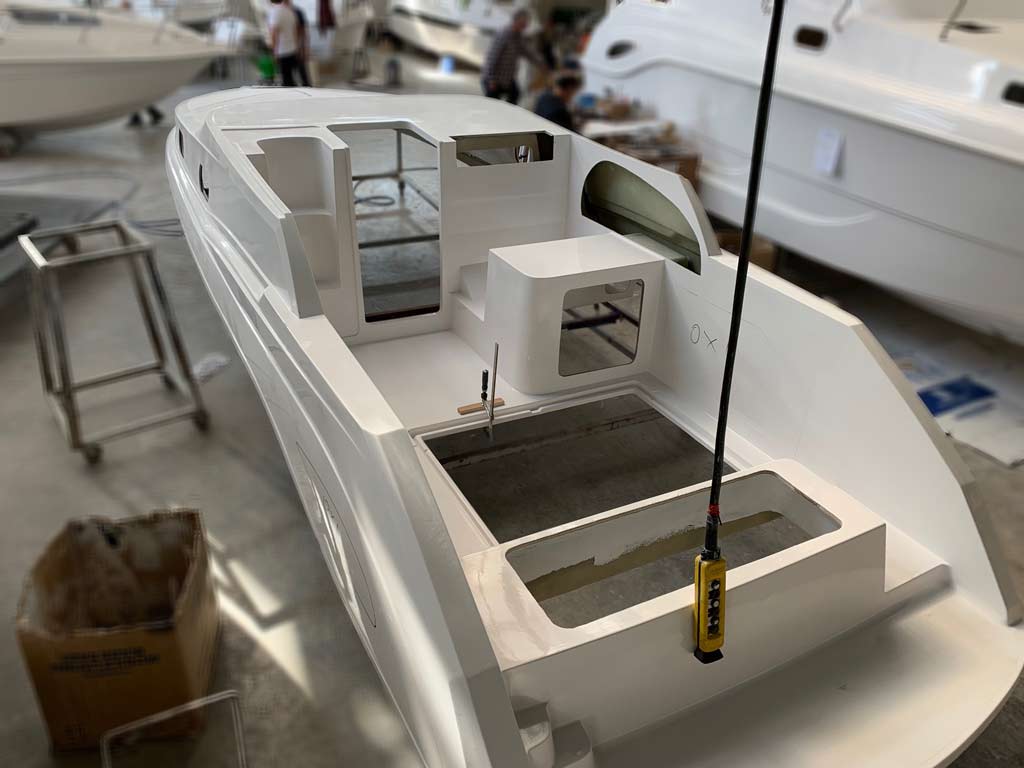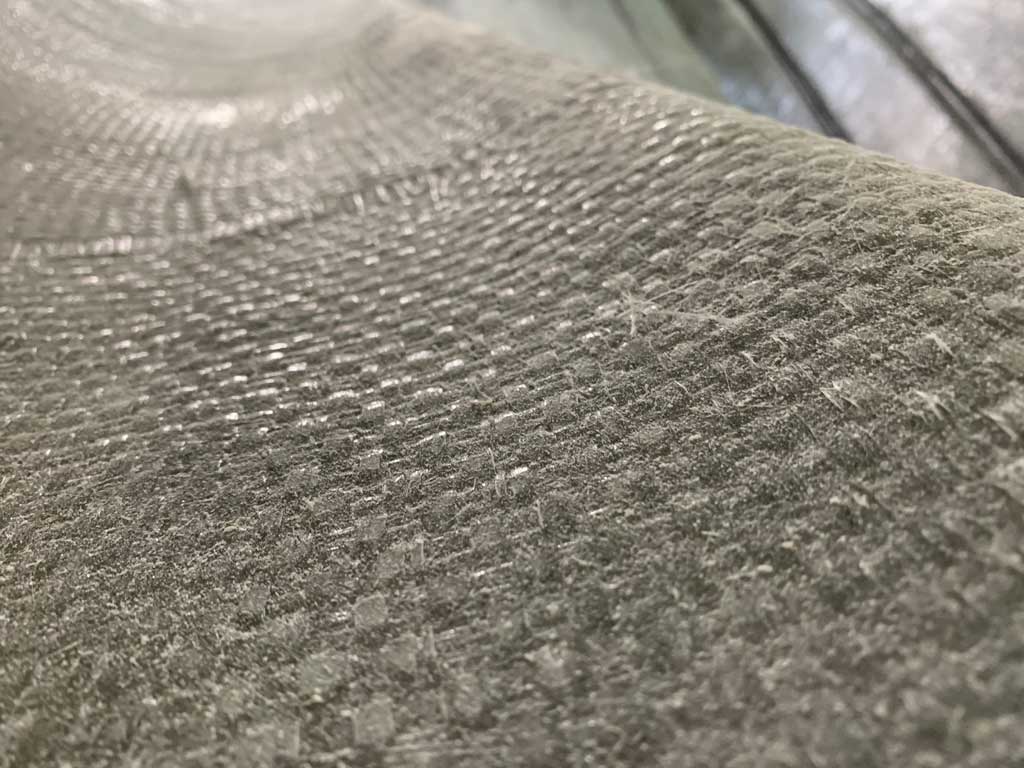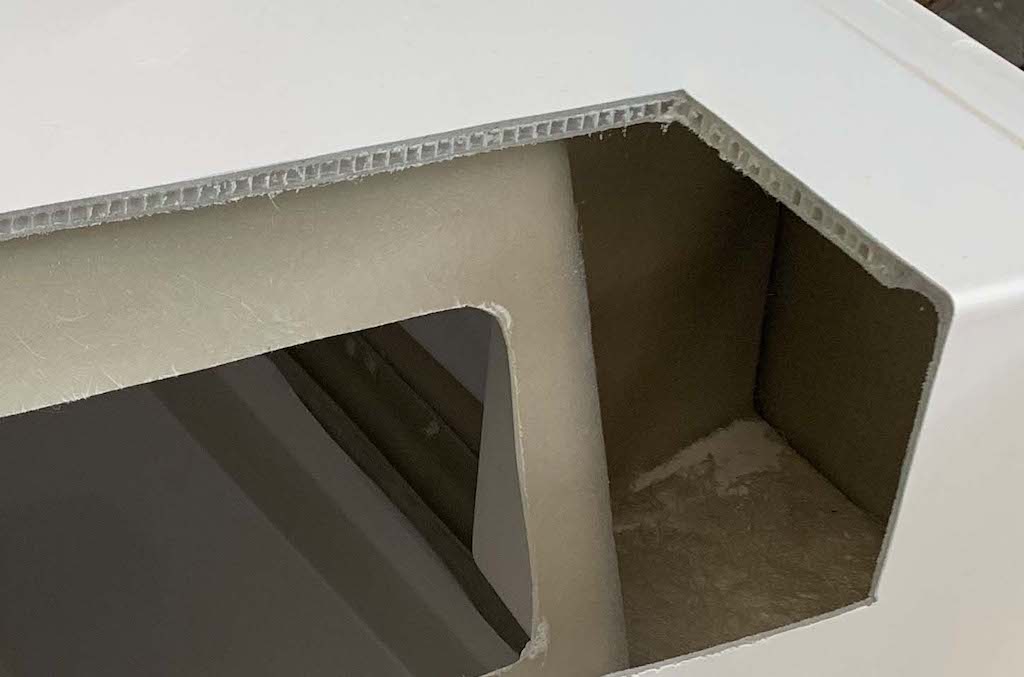Visitors walk through the corridors of the exhibition halls, scan each booth for something interesting and finally walk farr. Then her gaze hangs on a large boat that appears to be raised on a pedestal. No, this is not a pedestal. This is a trailer! They stop in front of the over 10m long SRX30 yacht line in amazement and disbelief.
When you watch them, you can literally hear their thoughts. And when they ask the burning question, it always brings a grin to our faces:
- "Does the boat with trailer really weigh less than 3.5 tons?"
- "With other manufacturers, trailerability already stops at x meters. "What are you doing differently?"
- "Are you cheating or how does it work?"
Different formulations, but always the same question:
Why are the Yachtline boats lighter than the competition?
The secret of the Öchsner boats: handcraft, time and the most modern materials
The short answer: we exchange very time-consuming manual work with modern materials for noticeable weight savings.
Since the short answer doesn't really reveal much, let's go into more detail ...

Hand laminated boats
Our boats are made very elaborately by hand using the laying process from glass fiber reinforced plastic (GRP). Of course, this applies not only to the fuselage, but also to the cabin, the substructure of the rear seating area, etc.
How exactly do you have to imagine manual lamination?
What are the advantages of hand lamination?
The shape of the fuselage is gradually laid out with thin GRP mats. Then epoxy resin is applied evenly with the help of brushes and rollers, whereby air bubbles are pressed out between the mold and the GRP, as well as inside the mats.
When a layer is finished, GRP mats follow, which are connected to the previous layer in the same way. These steps are repeated until a stable wall of the desired thickness has been created.
Other manufacturers save this laborious manual work and simply spray the form out with GRP. In the end, the required stability is also achieved here, but much more material (weight) is required for this.
- Significant weight savings, since the wall thickness is only laminated as thick as necessary depending on the location in the boat
- The process enables complex shapes that make our boats even more comfortable
- The flexible mats completely line the curves and edges of the form to avoid trapped air bubbles
- In the end, our boats are less susceptible to osmosis - however, 100% protection can only be achieved with an appropriate protective coating

GRP with honeycomb structure
Wherever possible, we have been replacing hand lamination with a combination of slightly flexible GRP panels with a honeycomb structure and additional reinforcement with hand-laminated GRP mats for years. This affects above all the superstructure of the boats.
The bees demonstrated this stable lightweight construction with their honeycomb structures. And today it is already used in many areas where low weight and high stability are important: for example, in aerospace or in sports on surfboards and snowboards.
Due to this high resilience and stability of the material, our models 29, SR30 and the successor SRX30 -YACHTLINE- meet the requirements for CE certification B.
What are the advantages of the GRP honeycomb structure?
- The GRP panels are very light and thus save unnecessary weight
- Nevertheless, they have excellent stability - even with movement and temperature fluctuations

Double-shell hull construction
A double-shell hull, of course, means double work involved in hand-laminating, which is already time-consuming, since almost two hulls have to be produced per boat. But of course we only do this work because it's worth it.
What are the advantages of the double-shell hull?
- Significant weight savings compared to conventional designs
- Additional stability thanks to two interconnected GRP walls in the lower shell
- Better indoor climate thanks to intermediate ventilation. This serves as insulation on warm and cool days

Low-Wood-System
There is no question that wood is a versatile material, but it is also very heavy. Therefore, we largely replace the wooden ribs that stiffen the fuselage with a lighter, stable laminate rib system.
What are the advantages of the low wood system?
- Significant weight savings through the use of GRP
- In contrast to wood, the laminate is insensitive to moisture
- This significantly increases the lifespan

So what makes Öchsner boats different from the competition?
In conclusion, this question can be answered easily:
We attach great importance to the longevity and the greatest possible comfort of our boats.
Therefore, we do not save at the wrong end.






